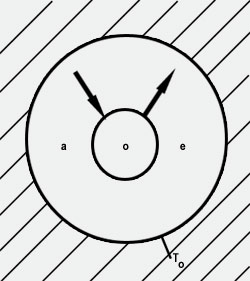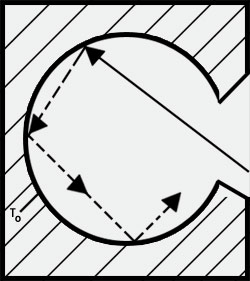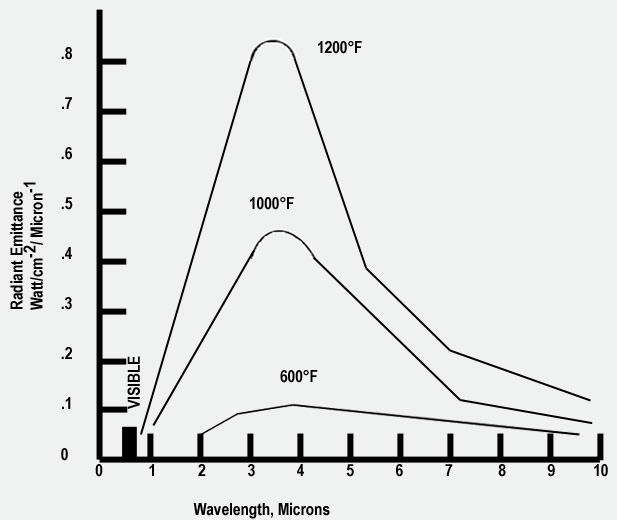|

|
The
need to make infrared temperature measurements at the correct emissivity setting
cannot be over-emphasized. The characteristics of materials, particularly with
respect to the ability of materials to absorb, transmit or reflect infrared
energy, all need to be considered in a discussion on Emissivity.
Emissivity is
defined as the radiation efficiency of a real-world surface as compared to an
ideal “blackbody” radiator. Kirchoff’s Law is the most fundamental principal of
infrared thermometry. This law states that at thermal equilibrium in a vacuum,
the power radiated by an object must be equal to the power absorbed. This is
expressed as:
|
|

|
|
This
number expresses the emissive efficiency of an object and is referred to as
emissivity. This general law applies to any wavelength.
If an object
(O) is within an evacuated cavity with walls of a uniform temperature (To),
at thermal equilibrium, O must reach To, and radiation emitted by the
walls incident on O and absorbed must equal the radiation emitted by O (See
Figure 5 below).
|
|
 |
|
Figure 5 |
|
Referring back to Kirchoff’s Law where a = e, this perfect absorber or
“blackbody” must also be the most efficient radiator as is possible. An example
of a target that is as efficient as possible at absorbing the energy is shown in
Figure 6 below: |
|
 |
|
Figure 6 |
| An ideal
blackbody radiator has the radiation characteristics shown in Figure 7. Thus,
from the curve of Figure 7, a 1200°F blackbody radiates .8 watts from a 1 cm
square area on it through a one micron wide spectrum “window” centered at 3
microns wavelength. |
|
 |
|
Figure 7 |
|
A
real-world, opaque, “greybody” surface at the same temperature will radiate less
energy than this due to internal reflection at the surface. A greybody with a
surface emissivity, e, will have exactly the same family of curves as Figure 7,
except that the radiant emittance numbers on the ordinate (vertical axis) are
all multiplied by e. Hence, the output of an infrared detector that has been
calibrated to a blackbody source will only put out “e” times as much voltage
when looking at the greybody.
If now,
we apply a voltage amplifier with a gain of 1/e to the detector output voltage,
we will have a voltage at the amplifier output equal to the detector voltage
when looking at the blackbody calibration source at the same temperature.
|
|